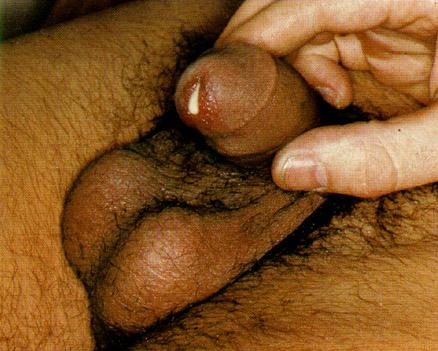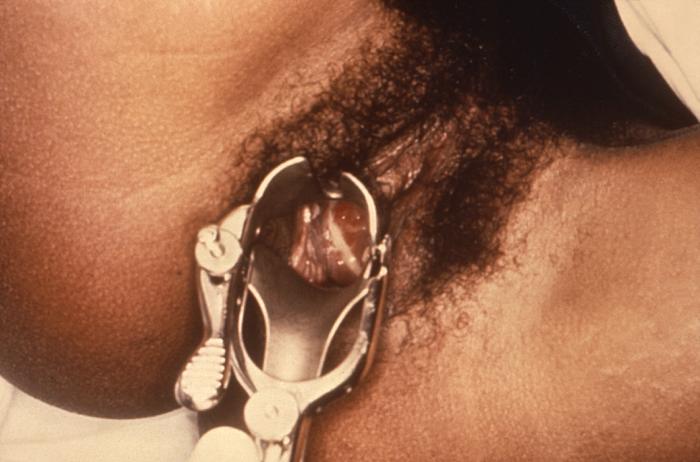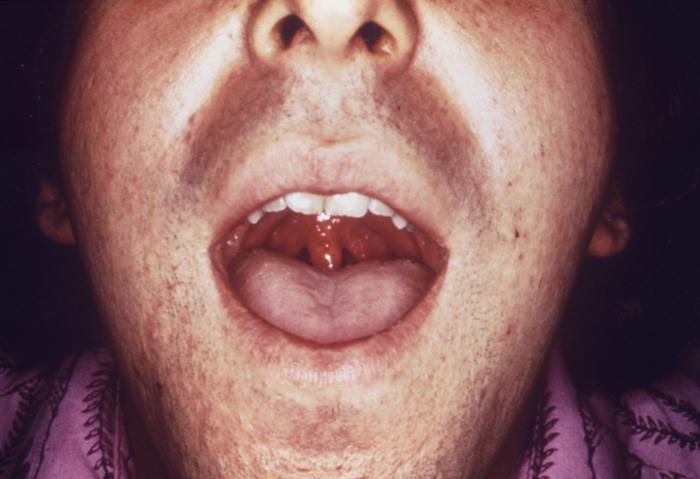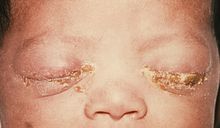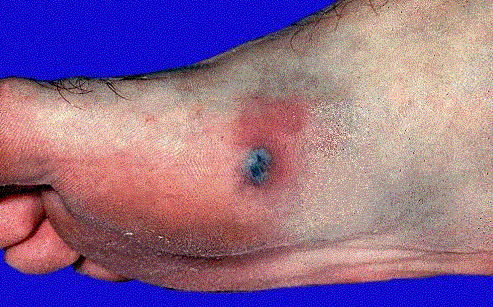Gonorrhea history and symptoms
|
Gonorrhea Microchapters |
|
Diagnosis |
|
Treatment |
|
Case Studies |
|
Gonorrhea history and symptoms On the Web |
|
American Roentgen Ray Society Images of Gonorrhea history and symptoms |
|
Risk calculators and risk factors for Gonorrhea history and symptoms |
Editor-In-Chief: C. Michael Gibson, M.S., M.D. [1];Associate Editor(s)-in-Chief: Priyamvada Singh, MBBS [2]
Overview
Half of women with gonorrhea are asymptomatic while others have vaginal discharge, lower abdominal pain or pain with intercourse. Most men who are infected have symptoms such as urethritis associated with burning with urination and discharge from the penis. Either sex may also acquire gonorrhea of the throat from performing oral sex on an infected partner, usually a male partner. Such infection is asymptomatic in 90% of cases, and produces a sore throat in the remaining 10%. The incubation period is 2 to 14 days with most of these symptoms occurring between 4–6 days after being infected. Rarely, gonorrhea may cause skin legions and joint infection (pain and swelling in the joints) after traveling through the blood stream. Very rarely it may settle in the heart causing endocarditis or in the spinal column causing meningitis (both are more likely among individuals with suppressed immune systems.
History and Symptoms
History
Patients suspected of having DGI should undergo a complete history and physical examination. In addition to evaluating for the typical clinical manifestations of joint involvement with or without skin findings discussed above (see 'Clinical manifestations' above), a thorough sexual history should be performed.
A detailed and thorough history from the patient is necessary. In patients with suspected sexually transmitted diseases the following history should be sought:
- Past history of similar symptoms or STDs in patient, current or past partners
- Type of contraception used
- History of sexual assault
- Reproductive history
- Details of parity including any history of ectopic pregnancies
- Timing of the last menstrual period
- Assessing the possibility of pregnancy
Symptoms
Common urogenital and extragenital Infection
- The incubation time varies from 2 to 14 days with most symptoms occurring between days 2 and 5 after being infected from an infected partner.
- A small number of people may be asymptomatic for up to a year. They may be completely unaware that they have caught the disease, and therefore do not seek treatment. This increases the risk of complications and the chances of passing the infection on to another person.
- Between 30–60% of women with gonorrhea are asymptomatic or have subclinical disease.[1]
| Type of Gonococcal Infection | Symptoms | Images[2][3] |
|---|---|---|
| Male Genitourinary |
| |
| Female Genitourinary |
|
|
| Gonococcal proctitis (Rectal) | ||
| Gonococcal pharyngitis |
|
|
| Ophthalmia neonatorum |
|
|
Disseminated gonococcal infection
Symptoms of disseminated gonorrheal infection may include the following:
| Type of Disseminated gonorrheal infection | Symptoms | Images[4][3] |
|---|---|---|
| Arthritis Dermatitis Syndrome |
|
|
| Septic arthritis |
|
|
| Gonorrhea Meningitis |
|
|
| Gonorrhea Endocarditis |
|
|
References
- ↑ van Duynhoven YT (1999). "The epidemiology of Neisseria gonorrhoeae in Europe". Microbes Infect. 1 (6): 455–64. PMID 10602678.
- ↑ STD Gonorrhea Infection Gallery http://www.std-gov.org/std_picture/gonorrhea_w.htm Accessed on September 22, 2016
- ↑ 3.0 3.1 Centers for Disease Control and Prevention. Public Health Image Library (PHIL) http://phil.cdc.gov/phil/details.asp Accessed on September 22, 2016
- ↑ STD Gonorrhea Infection Gallery http://www.std-gov.org/std_picture/gonorrhea_w.htm Accessed on September 22, 2016
